Three in four nurses working in hospitals care about the success of their institution — “they show up and gown up…yet only 57% feel a sense of ownership in their hospitals, leaving leaders to expect 100% quality to be delivered by about half of the nursing workforce.”
This is the key finding in a study from PRC on the implications of nurses’ dis-engagement from their work.
That context puts this year’s NurseHack4Health event all the more essential and impactful.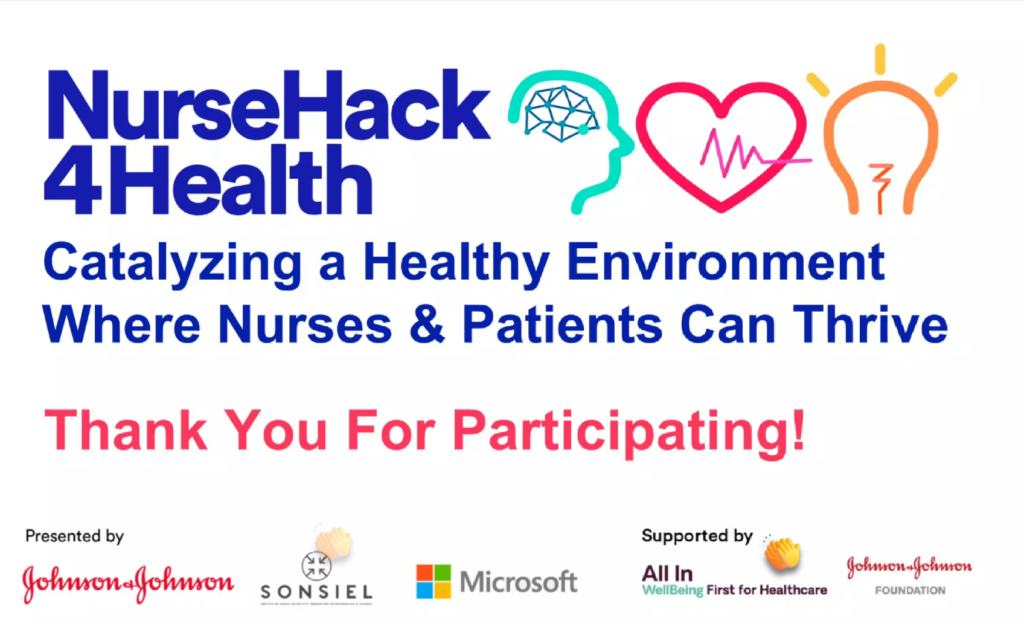
This year’s virtual hackathon was sponsored by Johnson & Johnson, SONSIEL, Microsoft, and the ALL IN: Wellbeing First for Healthcare campaign, which was founded by the Dr. Lorna Breen Heroes’ Foundation and #FirstRespondersFirst. [You can learn more about Dr. Lorna Breen here in Health Populi — a front-line heroic clinician who took her own life in the stress of the early COVID pandemic).
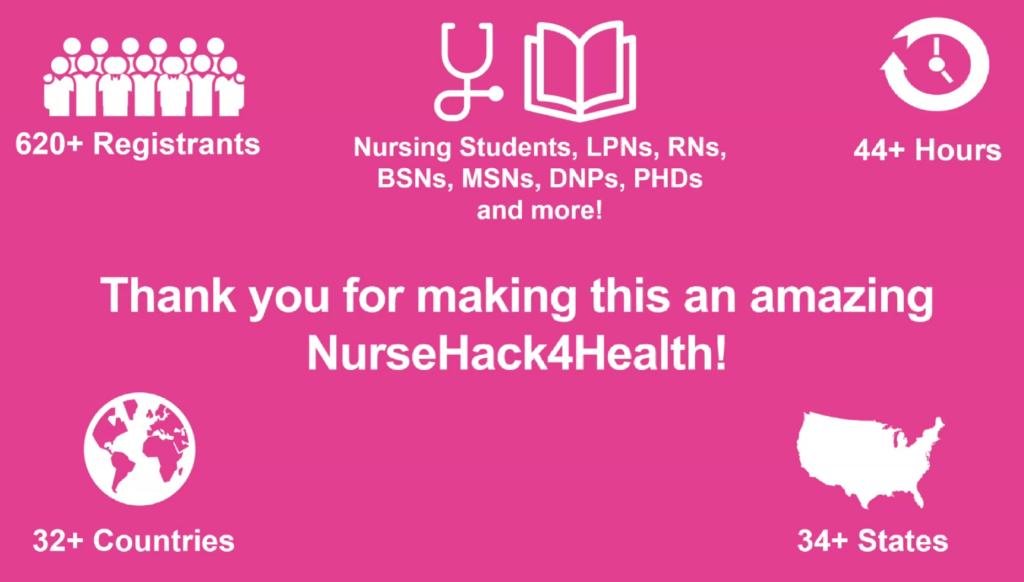
The weekend drew over 600 hacker-registrants to the platform, who met-up starting on Friday night and spent the next 44+ hours collaborating on solutions to a broad range of challenges facing nurses and health care systems.
Participants came from over 30 countries and from across the U.S., spanning licensed nurses from BSNs and RNs to PhDs and DNPs along with nursing students.
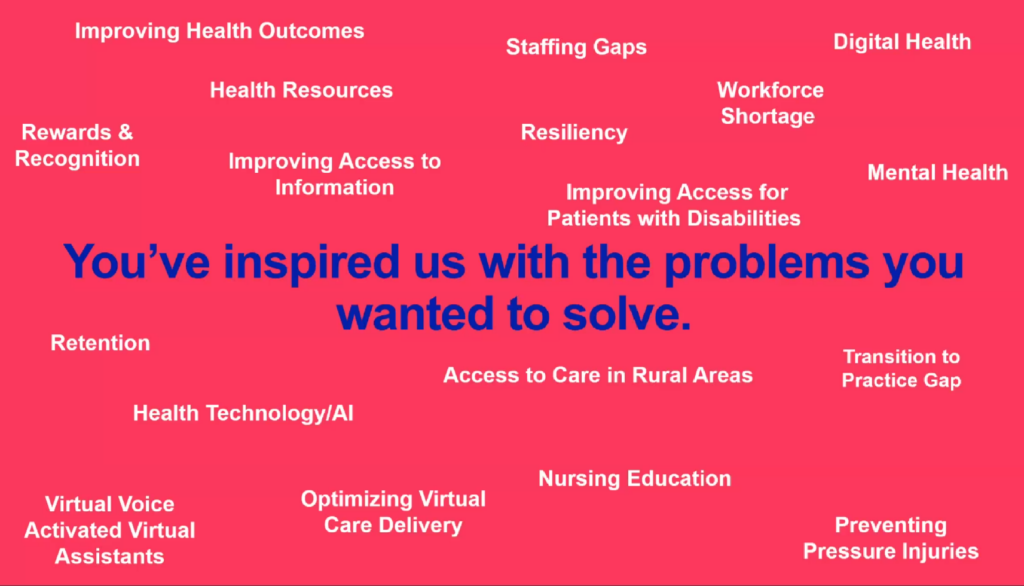
When I first participated in NH4H several years ago, an over-arching theme was how to attract and retain nurses with concerns about ongoing shortages of nurses in the U.S. health system.
This year, we know the nursing shortage is exacerbated by new sources of burnout — yes, the pandemic, and increasingly an uncivil society felt from both within the hospital and healthcare setting and from patients and their families. Some of these are shown on the inspiration/problems graphic here.
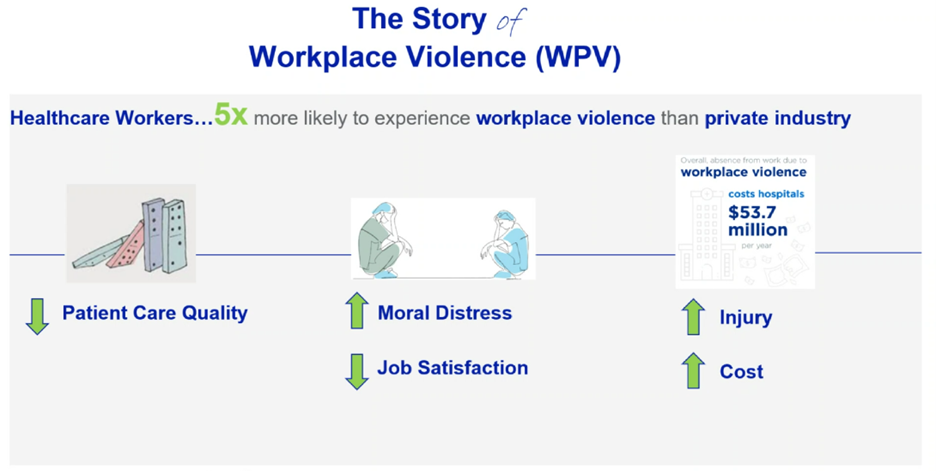
Among nine projects my panelist group and I evaluated, I’ll share one with you here which is an exemplar of how a diverse group of nurses and staff from ChristianaCare came together to address, in their words, The Story of Workplace Violence through the “Safety Sidekick” application.
They framed the challenge with a key statistic that will stay in your mind once you hear it: that health care workers are 5x more likely to experience workplace violence than employees in private industry.
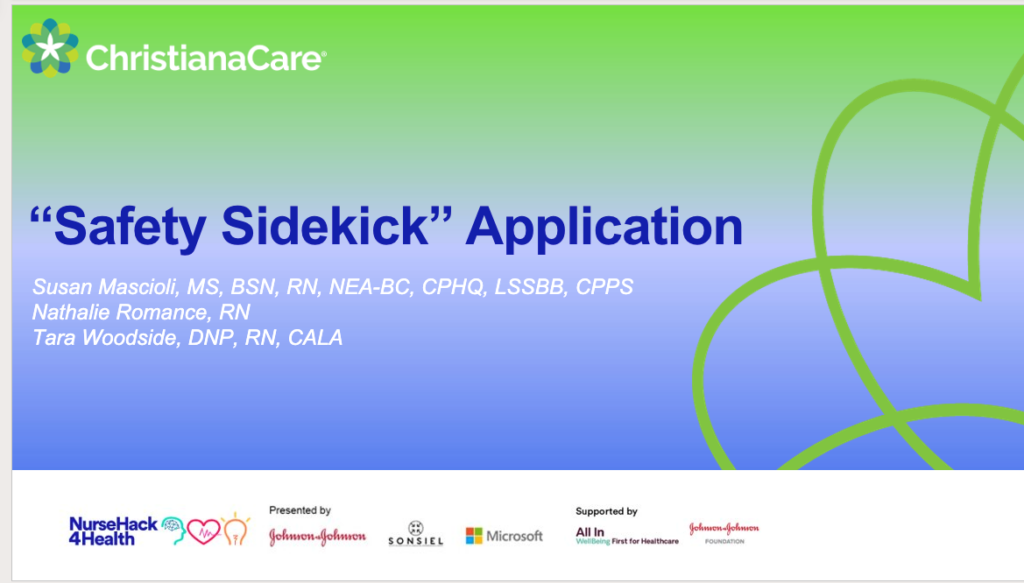
This leads to a range of mental health, clinical, and economic impacts — moral distress up, job satisfaction down in the case of the employee scenario.
We heard first-hand from one of the nurse-hacker-presenters that she herself was attacked by a patient — her experience being all-too-“normal” in 2023.
The power of this project and every other one of the nine our panelist team reviewed was the nurses’ personal experience inspiring each innovation and their authentic attention to detail and real-life implementation factors.
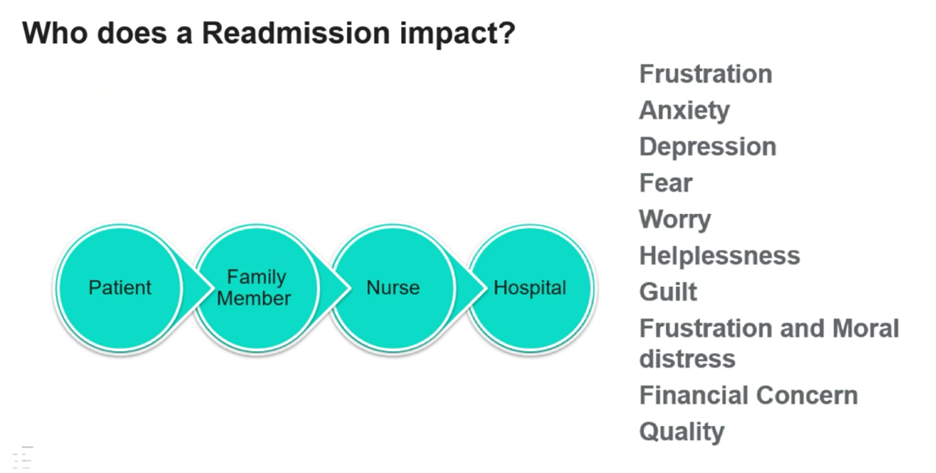
Health Populi’s Hot Points: A team representing Montefiore Medical Center in the Bronx, NY, introduced their solution by focusing on two ZIP codes: 10461 and 10462 — among “the sickest ZIP codes in America,” the team’s presenter explained.
Their solution was focused on safe transitions of care, which are key to solid patient outcomes as well as the entire value-chain of providers — from the hospital enterprise to nurses and family members, as shown in the diagram from the team’s pitch.
Note the aspects of impacts shown on the right of the chart: frustration, anxiety, depression, moral distress, financial concern among them.
I asked the team in our brief Q&A following up the pitch what they have learned about engaging patients in their self-care at home, deploying remote health monitors, consumer-facing medical devices and telehealth to peoples’ daily lives.
They responded with one word: “Trust.”
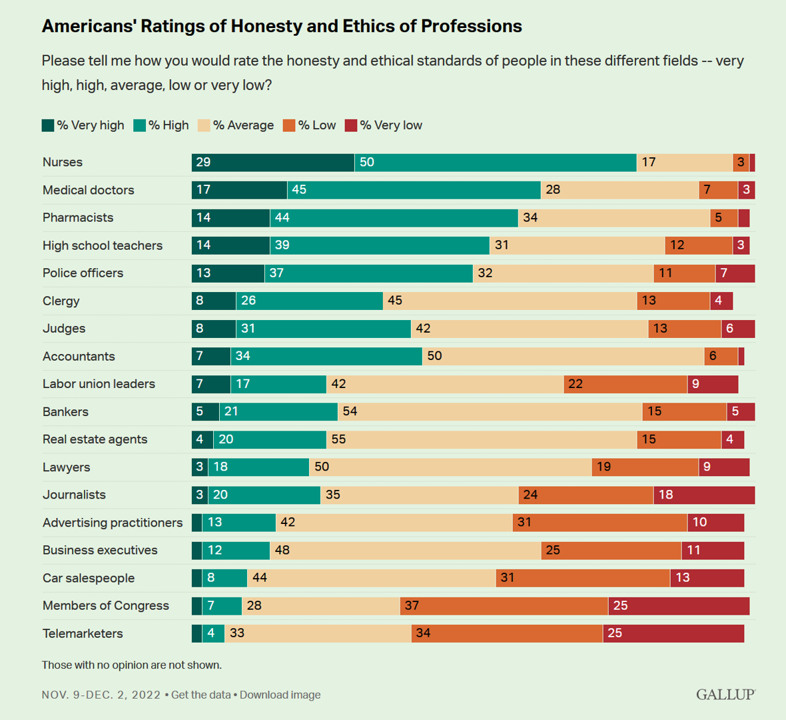
Year after year, consistently, nurses rank at the top of Gallup Poll’s survey on honesty and ethics in professions in the U.S.
That’s the secret in the patient engagement sauce that the Montefiore team knows and leverages in its work on safe transitions from hospital to home — to prevent re-admissions and bolster patients’ outcomes and family well-being.
And it bolsters nurses’ well-being, too, in a virtuous cycle of smart care team deployment underpinned by useful, well chosen technologies and enchantingly UX-designed processes.
A sincere and grateful “thank you” to all the sponsors of the Nurse Hack 4 Health program — and humble respect to every one of the 600+ nurses who participated in the weekend’s efforts. Every one of you is a hero and an inspiration to me and all of us who spent time with you. Thank you all.


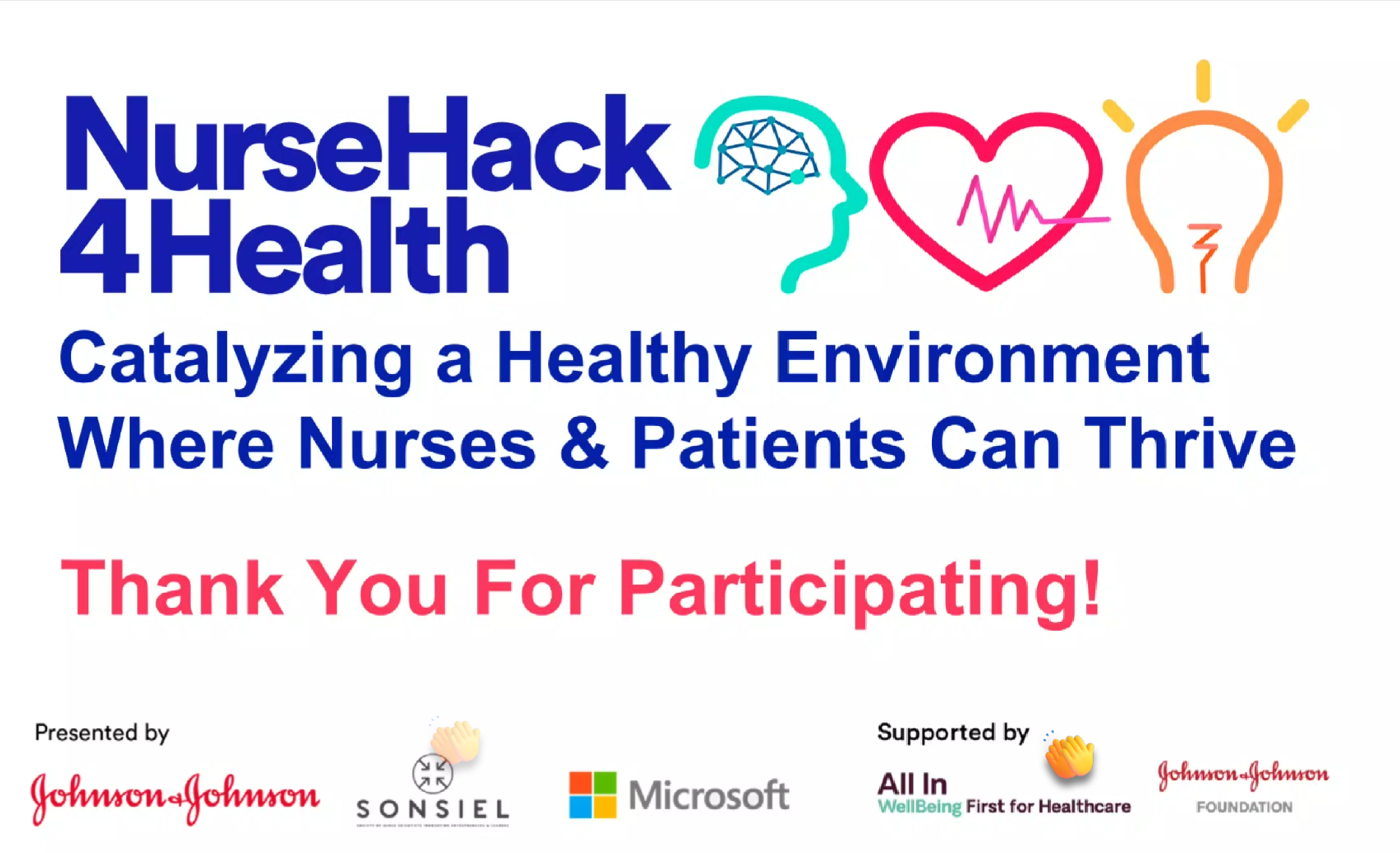


 I'm in amazing company here with other #digitalhealth innovators, thinkers and doers. Thank you to Cristian Cortez Fernandez and Zallud for this recognition; I'm grateful.
I'm in amazing company here with other #digitalhealth innovators, thinkers and doers. Thank you to Cristian Cortez Fernandez and Zallud for this recognition; I'm grateful. Jane was named as a member of the AHIP 2024 Advisory Board, joining some valued colleagues to prepare for the challenges and opportunities facing health plans, systems, and other industry stakeholders.
Jane was named as a member of the AHIP 2024 Advisory Board, joining some valued colleagues to prepare for the challenges and opportunities facing health plans, systems, and other industry stakeholders.  Join Jane at AHIP's annual meeting in Las Vegas: I'll be speaking, moderating a panel, and providing thought leadership on health consumers and bolstering equity, empowerment, and self-care.
Join Jane at AHIP's annual meeting in Las Vegas: I'll be speaking, moderating a panel, and providing thought leadership on health consumers and bolstering equity, empowerment, and self-care.